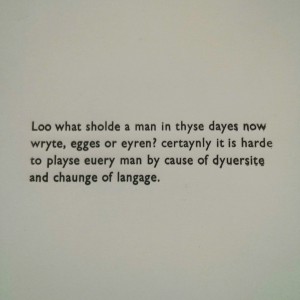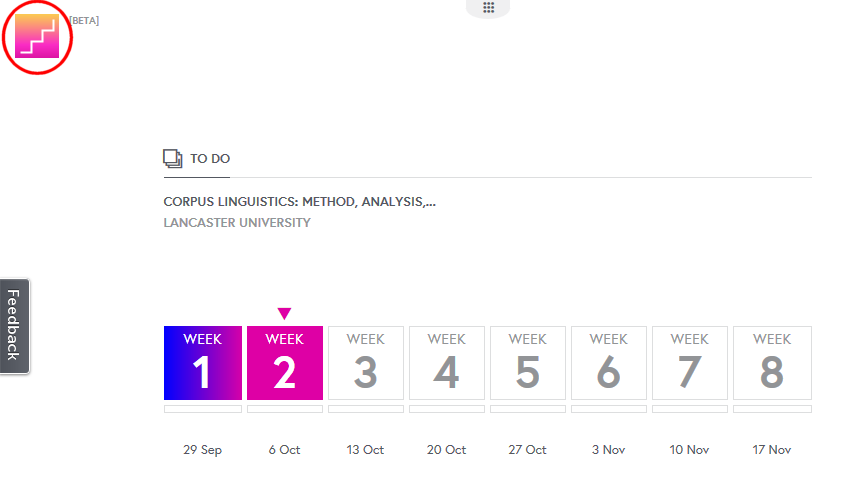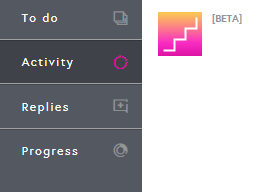“Ever tried. Ever failed. No matter. Try again. Fail again. Fail better.”
I first encountered these words in my first year as an undergraduate – scrawled on a desk in one of the carrels in Liverpool’s Sydney Jones library. Bruised by two deeply unpleasant years of failure and bullying from a teacher, I found something tender, something hopeful in these words that could help me reconceptualise my failure and turn it into something less painful.
I think about them often, and especially as a lecturer. This semester I’ve been officially responsible for the pastoral care of some students and have had even more reason to think about them.
The students I am responsible for are, largely, clever and hard-working and driven. They have learnt, very well, to put themselves under enormous pressure – a string of As and A*s at GCSE, As at AS and A-level, and then they find themselves at university where they are surrounded by similarly hard-working, driven young people. They find that they are challenged to think and write differently, and some of them find this transition very difficult.
I worry about them, these bright, driven students. The flipside to their ambition is anxiety, and fear of what happens if they do not get their desired mark.
I suspect that part of the problem is that they have not been allowed to fail before, and therefore haven’t developed the skill of failure. Failure, to them, is terrifying, overwhelming, something that will irrevocably mark their record and from which they cannot recover. One bad mark means that you are shunted off your track to an A, to a First, to certainty and stability in a world and job market that is marked by uncertainty. I am not sure that they know how to deal with failure, how to recover rather than be crushed by it.
The things I have found myself asking in my meetings with my advisees are: tell me about yourself, what are your hobbies, what are you doing outside your university work.
I’ve been surprised that many of them don’t have hobbies, things that they do for fun. To the most driven, this is alien to them – a part of their lives that they left behind along with after-school clubs – and I worry again.
I have asked them to find something to do for fun, whether that is swimming or sketching or baking or a musical instrument or dancing or hiking. I encourage them to find something that they don’t mind being mediocre at so that they can hopefully start to untangle “pleasure” from “skill” and “external measures of achievement”. I would very much like them to find something that they can be bad at – and to learn how to embrace that.
In the spirit of openness and sharing my own failures, I am an incredibly mediocre violinist. I had lessons as a child, never progressed past ABRSM Grade 4 and playing in a training orchestra, and am only a couple of stages beyond “horrible squalling sound”. However, I suspect that part of the reason I was so mediocre was because I didn’t enjoy it. Playing the violin was someone else’s ambition that had been foisted on me and I resented the weight of it. I hated exams, didn’t want to take them, and announced that I wasn’t going to take my Grade 4 exam a week before I was meant to do so. Instead of practising my set pieces, I fucked around trying to work out the Star Wars leitmotifs by ear and eventually stopped playing altogether because if I wasn’t doing exams, what was the point?
A few years ago, heartbroken in the wake of a bad breakup, I went to a violin shop and bought a violin. I dug up some choral scores and began to play again. It’s not become a great love or even something I do regularly – I much prefer singing – but I find it soothing to retune the violin, useful to play an unfamiliar piece rather than try to sightsing it, sometimes satisfying to play something by ear and to let my fingers find their place on the fingerboard rather than think consciously about the notes. I bought a book of folksongs and sometimes focus on one and learn it.
It’s made me reconfigure my relationship with the violin, on my own and free of other people or exam boards. It’s made me think about what it means to me, about a history of resentment and obligation and yet, how it has shaped me. For better or worse, I think in terms of violin finger positioning when imagining notes.
It’s made me think differently about failure: by most external standards I am a failure at this, but are these standards important? Who defines success and failure? I have become better at uncoupling a sense of achievement from external validation and, indeed, skill.
It’s made me practice being mediocre, to not give up because I lack the natural talent, to do something because I enjoy it rather than because I’m good at it. It’s encouraged me to redefine what I think of as an achievement.
It’s taught me about resistance: to resist the idea that we should devote our time to things that we are naturally good at, to grapple with my own sense of frustration that I am not better at something, to learn what it feels like when something is not easy.
It’s taught me to embrace “failures” and the quiet, stubborn pleasure at working at something until I can do it.
I am tired of success being measured in terms of exam results, awards, publications, grant capture. I want universities to be better at allowing both our students and ourselves to fuck up and more space to learn from our fuck-ups. I want there to be more space in the university for making mistakes, for failing, for things that don’t quite work, for stubbornness and persistence over the fireworks of natural talent. I want there to be space to learn and practice resilience, and for institutions to commit to encouraging that resilience rather than seeing failure as undesirable weakness that must be dropped.
Failure is difficult, but can be just as richly educational as success. Sadly I cannot change university culture on my own, but I can encourage my students to go out and practice failing at small things so they are better prepared should they fail at big things.





